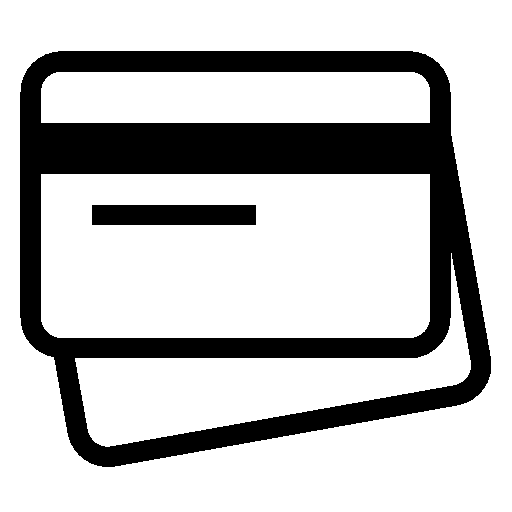Blank decks of cards may seem like simple, unassuming tools, but they are bursting with potential for creativity, education, and fun. Unlike traditional decks that come with predetermined designs and suits, blank cards provide a canvas for personal expression, allowing users to explore endless possibilities. This article explores the various applications, benefits, and creative ideas associated with blank decks of cards, showcasing how they can be used in diverse contexts.
The Basics of Blank Decks
A blank deck of cards typically consists of standard-sized playing cards made from durable cardstock, but devoid of printed designs, numbers, or suits. These cards come in various styles, including:
- Standard Blank Cards: These are usually white cards that mimic the size and feel of traditional playing cards. They can be used for a multitude of purposes, from games to learning tools.
- Colored Blank Cards: Some decks come in different colors, adding an additional layer of creativity. These can be used for coding or organizing information visually.
- Textured Blank Cards: Some blank decks feature textures, allowing for different tactile experiences. These cards can be used in art projects or as learning aids.
Benefits of Using a Blank Deck of Cards
1. Endless Creative Possibilities
The most significant advantage of blank cards is their flexibility and potential for creativity. Users can transform these plain cards into personalized creations tailored to their specific needs. They can be used for games, storytelling, or even art projects, making them ideal for creative individuals and educators alike.
2. Educational Tools
Blank decks of cards are powerful tools for learning and teaching. Educators can customize the cards for various subjects, including math, vocabulary, history, and science. For instance, teachers can create flashcards with vocabulary words on one side and definitions on the other, or design cards for math problems to encourage interactive learning.
3. Game Design and Development
Game designers and enthusiasts can use blank decks as prototypes for new games. By creating custom rules, mechanics, and designs, players can test and refine their ideas before moving on to a polished version. This hands-on approach to game design fosters innovation and encourages collaboration among players.
4. Social Interaction and Team Building
Using blank decks in group settings can encourage social interaction and strengthen relationships. Activities that involve brainstorming, icebreakers, or team challenges can be enhanced with custom cards, promoting engagement and collaboration among participants.
Creative Applications of Blank Decks
1. Custom Card Games
One of the most enjoyable ways to utilize a blank deck of cards is by designing custom card games. Players can brainstorm rules, mechanics, and themes to create a unique game experience. For example, a group of friends might develop a trivia game where each card contains a question and answers, leading to a fun and interactive evening.
2. Storytelling and Writing Prompts
Blank cards can serve as excellent storytelling prompts. Writers can jot down characters, settings, or plot twists on individual cards, randomly selecting them to inspire their narratives. This method fosters creativity and can help overcome writer’s block by providing unexpected ideas.
3. Personal Development Tools
Blank decks can also be used for personal growth and self-reflection. Individuals can create affirmation cards with positive statements or quotes that inspire them. By drawing a card daily, users can cultivate a positive mindset and encourage self-improvement.
4. Art Projects
Artists can use blank cards as a medium for creating mini masterpieces. By painting, drawing, or collaging on the cards, artists can develop a unique collection of artworks. These cards can be displayed, gifted, or even used in art shows, providing a fresh take on traditional art forms.
5. Memory Games
Blank cards can be transformed into personalized memory games. Users can write or draw corresponding images or words on pairs of cards and challenge friends or family to find the matching pairs. This activity is not only entertaining but also helps improve memory and cognitive skills.
6. Brainstorming Sessions
During brainstorming sessions, blank decks can be invaluable tools for organizing thoughts and ideas. Participants can write down their ideas on individual cards and sort them into categories or themes. This visual organization can aid in developing strategies, problem-solving, and fostering creativity in group settings.
7. Goal Setting
Using blank cards for goal setting can be an effective way to visualize ambitions. Individuals can write down their goals on individual cards and display them prominently in their workspace or home. This practice serves as a constant reminder of their aspirations and helps maintain focus on personal development.
How to Create and Customize Your Blank Deck of Cards
Creating and customizing a blank deck of cards is an exciting process that can enhance the overall experience. Here are some tips for designing your personalized deck:
1. Choose Your Cards
Select the type of blank cards that best suit your needs. Consider the size, material, and color options that resonate with your intended use.
2. Plan Your Design
Before diving into the creative process, take some time to plan your design. Decide whether you want to create a game, prompts, or art pieces, and sketch out your ideas. This planning stage will help you stay organized and focused as you customize your cards.
3. Use Quality Materials
If you plan to decorate your cards, use high-quality materials such as markers, paints, stickers, or washi tape. This attention to detail will ensure that your cards are visually appealing and durable.
4. Get Creative
Don’t hesitate to experiment with different styles and techniques. Try mixing colors, textures, and designs to make each card unique. The beauty of blank cards lies in their potential for creativity, so let your imagination run wild!
5. Organize Your Deck
Once you’ve customized your cards, organize them in a way that suits your purpose. For games, consider grouping cards by type or theme. For educational purposes, categorize them by subject or difficulty level.
6. Test Your Ideas
If you’re creating a game or educational tool, gather a group of friends or family members to test your creations. Gather feedback to refine your ideas and improve the overall experience.
Conclusion
A blank deck of cards is more than just a collection of empty cardstock; it is a versatile tool for creativity, education, and fun. From custom games and storytelling prompts to personal development and art projects, the potential applications are endless. By embracing the flexibility of blank cards, individuals can unlock their creativity, enhance their learning experiences, and foster meaningful connections with others. Whether you’re an educator, artist, or simply someone looking to explore new ideas, a blank deck of cards is a canvas waiting for your imagination to bring it to life.




